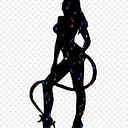What is Lotion?
The huge difference between lotion and cream is that lotion has a higher water content. Lotions are normally a mixture of water and oil droplets, are lighter than creams, and are not greasy.
Lotion is a proven and effective way to treat your dry skin. Research has shown that lotions improve skin texture and skin barrier function and reduce dryness. Here are the good ingredients in lotions for reducing your dry skin — and which lotions, ointments, and creams contain these healing elements.
Ingredients in moisturizers
Occlusives. Petrolatum and other oily substances in moisturizers are sometimes referred to as occlusives because they block the evaporation of water. Despite all the complicated variations of moisturizers, petrolatum is still a mainstay and is often named third or fourth on ingredient lists. Many fatty or waxy substances can serve as occlusives. Commonly used ones include cetyl alcohol (fatty alcohol), lanolin, lecithin, mineral oil, paraffin, and stearic acid. Dimethicone and cyclomethicone are silicones that act as occlusives. When products say they are oil-free, it usually means they contain no mineral or vegetable oil and instead rely on dimethicone as an occlusive. Aveeno products tout their “natural” oatmeal content, but in some varieties, the only active ingredient listed is dimethicone. Occlusive effectiveness varies. Petrolatum is the best at retaining water, followed by lanolin, mineral oil, and silicone.
Water. Most moisturizers are oil-in-water emulsions, so by definition, they’re creams and lotions. Based on the ingredient list, water often comes first. Some of the water evaporates when you apply moisturizer, but some of it also absorbs. While the stratum corneum absorbs water well, it doesn’t bind to it well, so some oily substance is needed to hold it in. Applying an oily substance to the skin without also filling it with water — whether from a moisturizer or from another external source such as a bath — is ineffective: you will only end up with oily skin that is still dry and cracked. In fact, the optimal way to soften skin is to soak it thoroughly first in water and then cover it with something like Vaseline. But it is time consuming and messy so unless your skin is very dry, using a moisturizer that contains water is much easier and more practical.
Humectants. Theoretically, humectants draw water into the stratum corneum both from the air and from the deeper layers of the skin. However, when the humidity is low, there is very little water in the air so almost all the water comes from the inside out. Some commonly used humectants include glycerin, honey, panthenol (or vitamin B5, an example of a vitamin used for physical properties, not nutrition), sorbitol (which we commonly see as an artificial sweetener), and urea. . Humectants have the potential to make your skin drier by drawing water into the damaged, dry stratum corneum that doesn’t hold moisture in. Thus, in practice, they are almost always used with occlusive materials that trap moisture that humectants attract into the stratum corneum.
Vitamin C. Usually under the name ascorbic acid, and vitamin E, usually as tocopheryl acetate, is added for its antioxidant properties. Studies of topical vitamin C have shown some effect, but in high concentrations. There are still doubts about its use in moisturizers because light and oxygen inactivate vitamin C. Vitamin E as tocopheryl acetate is biologically inactive and may function primarily as a preservative.
Menthol. Moisturizers that claim to be itching remedies like Sarna often contain menthol. Although the menthol doesn’t attack the underlying problem, the cooling sensation seems to relieve the itching sensation.
Lactic acid. The skin on the heels can become very thick, rough, and dry. Try using a pumice stone or callus file to remove the outer layer of skin and then using a moisturizer like AmLactin to soften it. AmLactin, an over-the-counter lotion, contains 12% lactic acid, a heavy-duty humectant that can also loosen adhesions so the heel skin is more flexible and less likely to crack. Sometimes products containing lactic acid sting.
